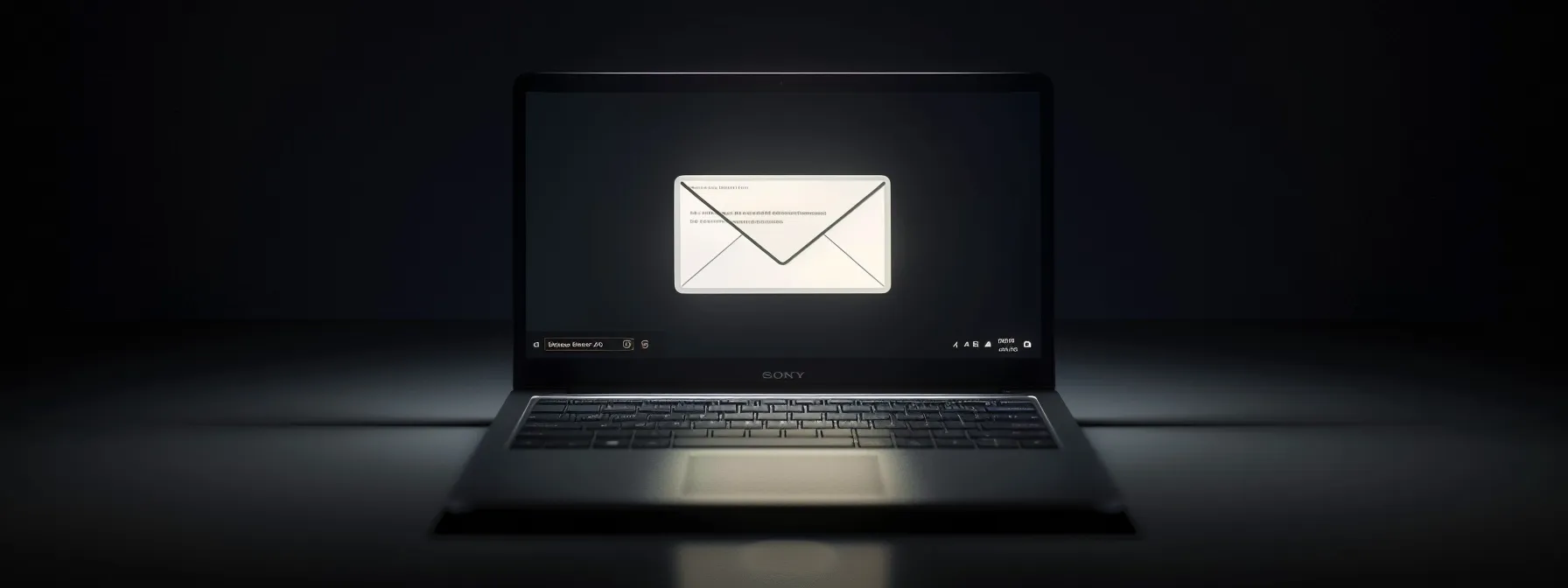In today’s crowded inboxes, launching successful email campaigns demands smart budget management and the right templates. Yet even with those in place, one stumbling block persists—deliverability. How do you reach the elusive inbox without falling foul of spam filters? This blog post guides you through precision email warming strategies to boost your sender reputation, enhance deliverability, and improve conversion rates. By mastering this process, you’ll learn how to maintain a healthy email ecosystem for long-term success, ensuring your messages consistently hit their marks—without triggering dreaded blacklists.
Understand the Importance of Email Warming for Deliverability

Email warming plays a pivotal role in determining whether an email campaign lands in the inbox or the spam folder. Email providers scrutinize sender reputation, factors of which include established engagement and adherence to protocols like DMARC. A strategically warmed up email account fosters trust, paving the way for successful inbox placement and campaign performance. This section delves into recognizing the assessment criteria by providers like Mailchimp and the palpable impact that warming has on campaign deliverability.
Recognize How Email Providers Assess Sender Reputation
Email service providers evaluate sender reputation with a keen eye, as it directly impacts the probability of emails being delivered successfully. Factors such as consistent open rates, the frequency at which recipients engage with the content, and adherence to money-related spam regulations are critical to establishing a solid reputation. Providers analyze these aspects to determine if a sender’s emails warrant attention, ensuring that only trustworthy communication reaches consumer inboxes. Consequently, businesses aiming to maintain high deliverability must focus on building and preserving their sender reputation as a foundational aspect of their email marketing strategy.
Learn the Impact of Warming on Inbox Placement
Warming up your email significantly enhances the likelihood of achieving inbox placement rather than relegation to the spam folder. This preparatory step proves to email providers that your cold emails are not unsolicited spam but purposeful and engaging content. As you gradually increase the volume of emails sent, you demonstrate consistent engagement and build a positive reputation, which is an indispensable tool in any successful email marketing strategy. A well-executed warming process aligns with the goal of sustained deliverability, moving your advertising efforts closer to the inbox and further from the risk of blacklisting.
Implement Step-by-Step Strategies for Effective Email Warming

An effective email marketing strategy hinges on the delicate balance of increasing visibility without tipping into spamming. Initiating the warming process with a small, engaged subscriber list sets the stage for a higher conversion rate. As the campaign gains momentum, judiciously expanding one’s email frequency demonstrates to providers the value and desire for the sender’s newsletters. With content personalized to the receiver’s interests and behaviors, engagement naturally rises, elevating the sender’s status and ensuring strategic inbox placement. These incremental steps, expertly navigated, form the critical bedrock for scaling email campaigns successfully.
Start With a Small List of Engaged Subscribers
Initiating email warming with a small, meticulously curated list of engaged subscribers is an astute starting point for any campaign. It allows organizations, including nonprofits that often operate with limited resources, to generate a reliable open-rate average above industry standards. This strategy sets a solid foundation within email marketing services, as early positive engagement signals are critical. By consistently delivering value-packed content to this initial group, a sender fortifies their marketing strategy‘s credibility, nurturing a reputation for quality and relevance that can scale upwards as the campaign grows.
Gradually Increase Your Email Sending Volume
When scaling an email campaign, a methodical increase in the volume of emails sent is essential for maintaining a trajectory that avoids the threat of blacklisting. Incorporating refined email templates that resonate with the customer and demonstrate the value of their investment can drive higher engagement and, consequently, revenue. A resource such as HubSpot can provide insights into optimal sending frequencies that align with audience behavior, allowing a business to tread cautiously while expanding their reach. This gradual approach not only stabilizes deliverability but also cultivates a trusted communication channel between a brand and its audience.
Personalize Content to Boost Engagement
Personalization is the cornerstone of enhancing email open rates and nurturing fruitful lead generation. Tailoring content to the recipient’s preferences and behaviors demonstrates a nuanced understanding of their needs, prompting higher engagement levels. Utilizing free email marketing software intelligently can automate personalization at scale, thus refining the alignment between the messaging and the interests of an email list. This strategic approach not only boosts the value perceived by the recipient but also solidifies the foundation for a sustainable and respected email communication strategy.
Optimize Sender Reputation to Avoid Blacklists

Optimizing sender reputation is a vital step in email warming, closely tied to maximizing conversions and safeguarding against blacklisting. By authenticating emails with SPF, DKIM, and DMARC, marketers ensure their messages are recognized as legitimate, increasing their likelihood to reach customers effectively. Additionally, monitoring for blacklist inclusion and responding swiftly to delist can preserve the integrity of an email database. Tools from platforms such as Omnisend integrate artificial intelligence to streamline these processes, underscoring their cost-effectiveness and impact on sales outcomes. The subsequent sections delve into these authentication methods and blacklist monitoring strategies with practical insights for robust email marketing.
Authenticate Emails With SPF, DKIM, and DMARC
In the competitive realm of email marketing, authenticating emails using SPF (Sender Policy Framework), DKIM (DomainKeys Identified Mail), and DMARC (Domain-based Message Authentication, Reporting, and Conformance) is essential to fortifying sender reputation and enhancing customer relationship management. These authentication protocols serve as an industry-standard shield, validating the sender’s identity, reducing the risk of email spoofing, and providing graphics and content that are integral to a trustful relationship with recipients. By diligently applying these safeguards, companies can see a tangible increase in their email campaign‘s return on investment, as their communications are more likely to reach the inbox, thereby establishing a reliable channel for customer engagement and conversion.
Monitor Blacklists and Remove Listings Quickly
Monitoring for blacklist inclusion is a pivotal step for any brand utilizing HTML email campaigns as it can significantly impact deliverability and, ultimately, conversion rates. A proactive stance on removing a brand from blacklists at the earliest indication ensures that the percentage of emails reaching subscribers remains high. Observing statistics related to email performance and incorporating a clear call-to-action (CTA) can help maintain the brand‘s sender reputation, safeguarding against the detrimental effects of blacklisting on email marketing success.
Increase Conversion Rates Through Targeted Email Warming
To boost conversion rates in email marketing, precision in audience segmentation and performance testing is essential. Segmenting audiences enhances relevance, tailoring messages to user preferences and behaviors, leading to increased engagement on mobile devices and websites. A/B testing furthers email performance, allowing for a data-driven refining of content and customer experience. Together, these strategies aim to surpass the average open rate and avoid the pitfalls of blacklisting.
Segment Audiences for Greater Relevance
Effective segmentation in email marketing substantially improves the relevance of a campaign‘s content, leading to enhanced customer engagement and greater return on marketing investment. By categorizing the audience based on their interactions and preferences, marketers can craft tailored email communications that resonate more deeply, increasing deliverability and raising customer lifetime value. This targeted approach ensures that each message sent via an email client is not only seen but also appreciated, fostering a positive reputation that supports the overarching goal of precision email warming.
Use a/B Testing to Enhance Email Performance
Implementing A/B testing is a critical strategy in digital marketing that enriches knowledge and actively evolves email campaigns towards higher deliverability rates and personalized experiences. By comparing varying email elements, from subject lines to call-to-action buttons, marketers discern what drives recipients to engage and convert. This nuanced approach to conversion rate optimization underscores the finesse required in precision email warming, allowing for adjustments that enhance performance without compromising sender reputation.
Monitor Email Metrics to Refine Your Warming Process
Refining email marketing campaigns requires meticulous tracking of engagement metrics. By monitoring open rates, clicks, and bounces, marketers can refine their strategies, enhancing email deliverability and conversion rates. This data-driven formula provides insights that allow for targeted adjustments, boosting campaign effectiveness. Upcoming sections will delve into the specifics of tracking these metrics and the strategic responses they necessitate, granting marketers the tools to sharpen their email warming methodologies.
Track Open Rates, Clicks, and Bounces
Tracking the number of opens, clicks, and bounces serves as a barometer for the health of an email marketing channel, directly influencing email conversion rate. High open and click-through rates indicate that the content resonates with the target audience, while a low bounce rate reflects the accuracy and quality of an email list. Marketers who scrutinize these figures gain critical insights, allowing them to fine-tune campaigns for better engagement and reduced risk of falling into spam traps, thereby optimizing their email warming strategies.
Adjust Strategies Based on Engagement Data
Utilizing web analytics, savvy marketers can observe how their email strategies perform on the internet, turning information into action. Tools from ActiveCampaign and Constant Contact provide granular data on recipient engagement, allowing for the adjustment of email strategies to better align with subscriber behaviors. By interpreting this data, brands can tailor their campaigns to enhance user engagement, fostering a more robust email warming process that drives conversions while minimizing the risk of being blacklisted.
Maintain Long-Term Email Deliverability Success
To sustain long-term email deliverability success, it is essential to keep the mailing list pristine and current. Regular cleaning and updating ensure that marketers accurately target audiences based on their behaviors and preferences. Additionally, investing in content marketing, underpinned by research, is critical to keep your audience engaged and maintain a strong open rate. The subsequent focus will be on these two vital strategies for achieving consistent email marketing success.
Keep Subscriber Lists Clean and Updated
Maintaining a clean and updated subscriber list is crucial for ensuring high email open rates and efficient marketing automation. Regularly scrubbing the list of inactive or incorrect email addresses, using analytics to track subscriber engagement, and streamlining the opt-out process with an accessible unsubscribe button, reinforces the health of an email campaign. This attention to list hygiene not only preserves a favorable sender reputation but also contributes to the sustained success of precision email warming efforts.
Continue Engaging Recipients With Valuable Content
Continually captivating your audience with valuable content is vital for the success of Email Management Services, providing the dual benefit of promoting recipient engagement while adhering to Simple Mail Transfer Protocol standards. By crafting messages that resonate with subscribers, compelling call to action prompts, and directing traffic to a well-optimized landing page, marketers can foster a dynamic relationship with their audience. This approach not only enriches the customer experience but also reinforces a sender’s reputation, sustaining the momentum of a precision email warming campaign.
Conclusion
Precision email warming is crucial for bolstering deliverability and improving email campaign conversion rates while mitigating the risk of blacklisting. By methodically building sender reputation through engagement metrics and adhering to email authentication standards, businesses can enhance their relationship with email service providers and audiences alike. Implementing strategic warming practices, such as segmenting audiences and utilizing A/B testing, allows for refined, tailored communications that resonate with recipients. In essence, precision email warming empowers marketers to maximize their email strategy’s effectiveness, fostering sustained inbox placement and driving conversion growth.



